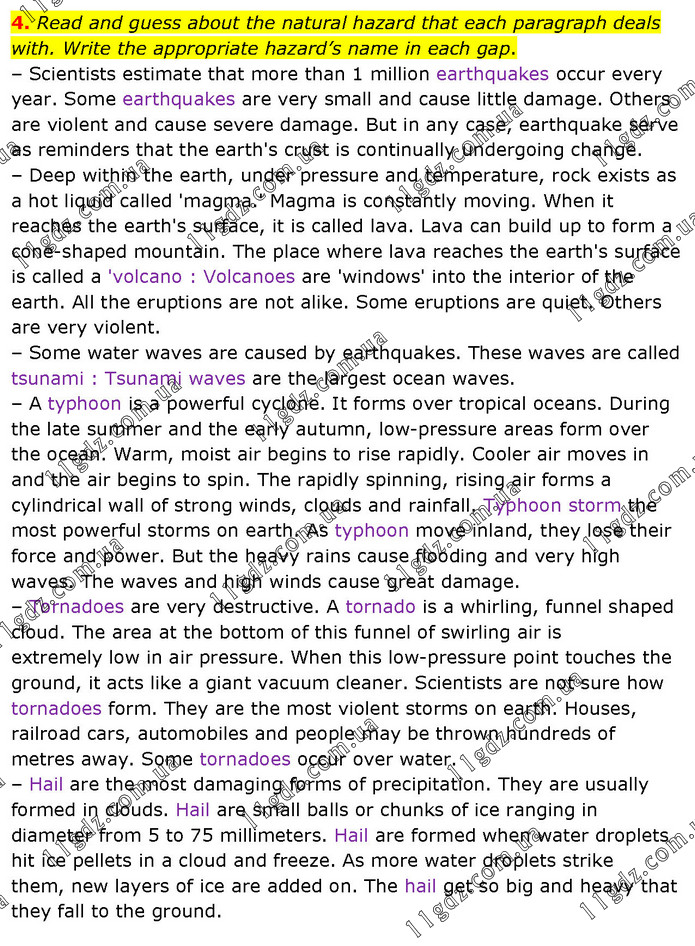UNIT 6. Natural Disasters » Стр.60 (4)

Read and guess about the natural hazard that each paragraph deals with. Write the appropriate hazard’s name in each gap. – Scientists estimate that more than 1 million earthquakes occur every year. Some earthquakes are very small and cause little damage. Others are violent and cause severe damage. But in any case, earthquake serve as reminders that the earth's crust is continually undergoing change. – Deep within the earth, under pressure and temperature, rock exists as a hot liquid called 'magma.' Magma is constantly moving. When it reaches the earth's surface, it is called lava. Lava can build up to form a cone-shaped mountain. The place where lava reaches the earth's surface is called a 'volcano : Volcanoes are 'windows' into the interior of the earth. All the eruptions are not alike. Some eruptions are quiet. Others are very violent. – Some water waves are caused by earthquakes. These waves are called tsunami : Tsunami waves are the largest ocean waves. – A typhoon is a powerful cyclone. It forms over tropical oceans. During the late summer and the early autumn, low-pressure areas form over the ocean. Warm, moist air begins to rise rapidly. Cooler air moves in and the air begins to spin. The rapidly spinning, rising air forms a cylindrical wall of strong winds, clouds and rainfall. Typhoon storm the most powerful storms on earth. As typhoon move inland, they lose their force and power. But the heavy rains cause flooding and very high waves. The waves and high winds cause great damage. – Tornadoes are very destructive. A tornado is a whirling, funnel shaped cloud. The area at the bottom of this funnel of swirling air is extremely low in air pressure. When this low-pressure point touches the ground, it acts like a giant vacuum cleaner. Scientists are not sure how tornadoes form. They are the most violent storms on earth. Houses, railroad cars, automobiles and people may be thrown hundreds of metres away. Some tornadoes occur over water. – Hail are the most damaging forms of precipitation. They are usually formed in clouds. Hail are small balls or chunks of ice ranging in diameter from 5 to 75 millimeters. Hail are formed when water droplets hit ice pellets in a cloud and freeze. As more water droplets strike them, new layers of ice are added on. The hail get so big and heavy that they fall to the ground.